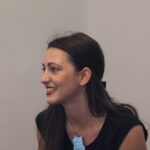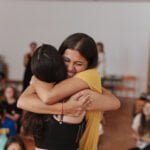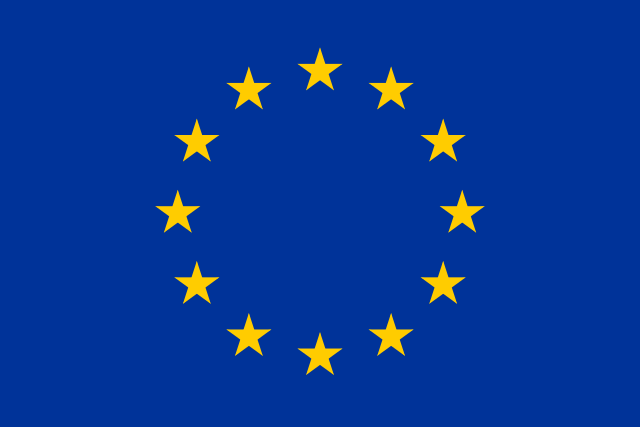The "Power to Act" project was one of the greatest experiences of my life. I can honestly say that every single person from that exchange made an unforgettable impact on me. I got a chance to learn a lot about other participants’ cultures and traditions, but I also got to know them as amazing individuals. We got to know the meaning of non-formal education without really realising that we were part of it ourselves. Activities that we had were fun and educational at the same time, which was very different from what I was used to. Before this exchange fun and education were two different terms for me, and in no way could I connect those two, but now I can.
Through a variety of games and theatre exercises, this youth exchange programme proved a life changing experience for its young participants and an inspiration for future Erasmus+ projects. Spending a week in Croatia, 25 youngsters from five countries learned more about collaboration, trust, creativity, and above all, themselves!
The success of running participatory workshops depends on finding ways to really involve everybody from the very beginning to the end. We have to create the magical atmosphere that gives young people the confidence to try a new activity, building an emotional connection along the way.
To find out more we interviewed Natali Bosić, the Project Coordinator:
What was the idea behind this youth exchange?
We aimed at empowering young people by engaging methods of participatory theater. Our idea was using simulations and games to develop youngsters’ skills in communication, collaboration and creativity. We specifically wanted to improve opportunities for 13- to 16-year-olds, the youngest age group taking part in Erasmus+ projects. Running projects at this level can be particularly demanding. For example, we need to explain to parents that Erasmus+ projects are safe and responsibly run (as well as free). For these younger participants, Erasmus+ projects have an even greater impact on their lives and makes it more likely they will engage with more programmes in future.
How did you find other youth workers and organisations who could help realise your project?
I met Aleksandra Mihajlovska, a youth leader from Macedonia during an Erasmus+ training course, in the early days of starting our own youth organisations. We were on the same page, as we dreamt about realising a youth exchange and began recruiting partners through our shared contacts. I knew of other youth workers in Italy and Serbia, and Aleksandra brought in the Danish organisation. Of course, it was important that our partners already had experience of working with younger teenagers in their communities.
How did you ensure that youngsters were really involved in the project?
As part of our preparations, we arranged an Advanced Planning Visit (APV), where a youth leader and a young participant from each organisation was invited to present their own ideas on what activities we should run. This really got them involved in creating their own programme. Except for our Danish partner, each organisation had experience in circus, performing, dance and theatre, so we also made the best use of their combined talents! Introducing theatre-based group activities was a great way to encourage participation.
How did you organise the weekly schedule?
Once young people had decided on which activities to include, we arranged them to suit the different phases of the programme. For instance, we as youth leaders knew which activities would work better on the first day, when they would be meeting each other and beginning to form friendships. During the second part of the week where we wanted to build trust, we concentrated on circus activities involving closer contact and activities where individuals had to rely on the group for support. This encouraged the youngsters to feel like active members of the project, while youth leaders just connected the dots and helped to prepare them for the activities.
Was the participatory theatre truly involving youngsters?
Yes. Participatory theatre methods were engaging, and we made sure that everybody feels comfortable to participate. When first selecting participants, we asked them how they felt about doing a performance, and if they were ready to try doing something new. Naturally, we kept in mind that for some youngsters this is going to be a real challenge, so we were careful in taking them out of their comfort zone and progressing slowly towards more advanced activities through the week.
Can you talk about a few examples of the activities?
One outcome of the week was the production of a project toolbox, which brought together some best practices that participants shared. For example, the Italian group taught how ‘acrobalance’ skills and making human pyramids could be useful in team building! Through discussions with the group, we made a point of emphasising how each activity could be fun but also create a real benefit. In one activity about intercultural dialogue, participants were divided into four different (imaginary) ‘tribes’, as a way of thinking about the rules and taboos of cultures. In addition to thinking up their own special rituals using the materials they found, one group even marked their territory in the woods! When the tribes eventually met, a clash of cultures became apparent. But afterwards they reflected on their experiences and were able to discuss the causes of their behaviour. Though presenting intercultural issues to young people can be a daunting prospect, this roleplaying format made it a lot easier to connect an abstract idea to the experience of everyday life.
Is there one example that best reflects the success of the exchange?
One simple activity took place at a huge sports field. The whole group stood in a line, except for one person who was running towards them with closed eyes, trusting that the others would catch him. When we tried this activity at the beginning, many in the group refused and could not even manage the task at walking pace. But when we repeated it on the last day, each one of them ran into the group without hesitation! It was a heartwarming moment, the best evaluation ever.
What were the challenges?
The biggest challenge was to find a balance in the activities between freedom and structure. Being responsible for a huge group of youngsters meant that we needed to check the legal situation in each country regarding travelling, documentation and so on. As half of our group were leaving their home countries for the first time in their lives, we had to prepare both youngsters and parents as well! In the end we did not have any problems, but that was because we took all of our project preparations very seriously. We organised walks outside the project premises, and supervised areas where they could hang out and play board games in the evening. As other groups and events were present at the resort, they had the chance to show our results to other young people. On one occasion we arranged a talent show, for instance.
Do you have any suggestions for anyone who is considering their first project?
Choose partners you know, and don’t just search for organisations randomly on the internet. It helped a great deal that we knew our partners from previous projects, and we made sure they were involved at every step!
Do you know what impact this youth exchange has had?
Some of the participants have submitted project applications on their own, which hopefully will be realised after the pandemic. Another impact, a few weeks after the project’s completion, some of our participants met again at Storyland, another youth exchange in Sweden. Anyone who takes part in these kinds of projects knows the strong friendships they form, and these were very evident during the reunion of young people! They were also able to share their enthusiasm with the rest of the new group and what they had learned in Croatia.
Project outcomes
One outcome of the youth exchange was the production of a project toolbox which brought together some best practices that participants shared.
Toolbox
The methods described in the publication are based on games and simulations. They aim to develop participants’ skills in communication, collaboration, trust and imagination.
About the project
Supported by:
Erasmus+ / Youth Exchanges
EU Youth Programme Priority:
Participation in Democratic Life
Topic:
Youth Participation / Youth Sector Development
Visibility:
Project outcomes were promoted by each group on various events! For instance, in Rijeka, Croatia, there were presentations in school and an article was produced. In Serbia, young people gave an interview on national TV! Italian participants gave a performance in the streets of Benevento inspired by the project.
Organisations involved:















